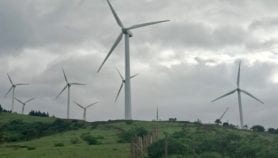08/02/07
Can the CDM promote a low-carbon energy market?
Send to a friend
The details you provide on this page will not be used to send unsolicited email, and will not be sold to a 3rd party. See privacy policy.
The Kyoto Protocol’s Clean Development Mechanism — created to establish a market for reducing global emissions of greenhouse gases — has not cut emissions related to energy production in the developing world, argues Michael Wara in this Nature commentary.
Although China and India have entered the carbon market with great enthusiasm, almost 30 per cent of the carbon credits on the market come from reducing emissions of trifluoromethane (HFC-23) rather than carbon dioxide.
Cheap HFC-23 credits are a disincentive to investing in low-carbon electricity plants. But unless countries pursue these projects, it will be hard to limit climate change.
Wara suggests that the Clean Development Mechanism be a market for just carbon dioxide rather than for all six greenhouse gases, and that preference be given to projects in the energy sector.
He predicts that the energy sector in China and India will rise to meet the new demand for low-cost carbon credits.
But he says industrialised countries must also increase their investment in technology in the developing world, agree to share new low-carbon technologies, and help foster strong energy markets and security arrangements in those countries.
More on Energy
Multimedia
African innovator turns plastic waste into liquid fuel
Francis Kantavooro has produced a locally assembled reactor that turns plastic waste into16/12/19












